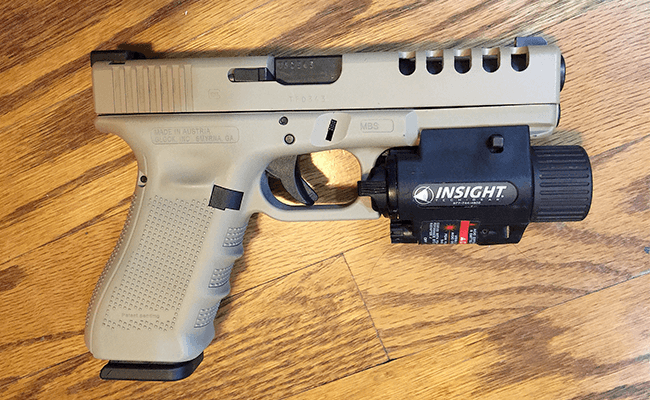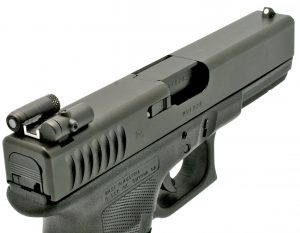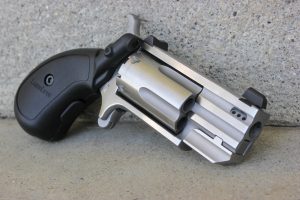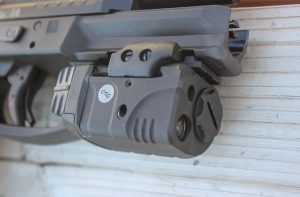Why You Should Consider Getting Laser Sights
Over the last two decades, laser sighting systems have become more common. Currently, there are a number of companies that offer a wide variety of laser sights to fit almost any defensive firearm, especially handguns, and these optics are more than just a gimmick. With proper training, a laser can make your firearm more versatile and accurate. If you’re thinking about adding a laser to your gun, here are some basics you need to know before you begin.
Why Buy a Laser?
Guns, ammunition and holsters are expensive, so why fork over extra cash for a laser optic? That’s a legitimate question, but there are plenty of compelling reasons to add a laser to your firearm.
First, today’s lasers are lighter and sleeker than ever before, and they are also more affordable. You can often find a high-quality laser for a few hundred dollars, and the major advantage of lasers is that they work in any light conditions. In full daylight, they are as effective as iron sights for close-range shooting, and I’ve found that, especially with short-barreled defensive handguns, my accuracy actually improves when I’m using a laser. In low light, of course, lasers are far more effective than traditional iron sights. In addition, lasers don’t require you to raise the gun to eye level to fire, another important consideration on a defensive handgun.
Which Laser is Right For Me?
The first consideration when purchasing a laser is where you would like the unit to be mounted on your firearm, and you now have more choices than ever before. Traditionally, lasers have been mounted on the accessory rail under the barrel, and those guns required a holster to accommodate them. But today there are lots of other laser options that don’t require a special holster. Crimson Trace’s Lasergrips, for example, have the laser unit molded into the grip body, and the intuitive activation pad means that as soon as you draw the firearm the laser illuminates. LaserLyte’s rear sights offer a laser unit that is built into the rear sight itself, and LaserMax offers its Guide Rod Laser that emits a beam from the front of the guide rod that gets installed on a semiautomatic handgun.
Another consideration when purchasing a laser is beam color. Until a few years ago, red lasers were about the only option, simply because building a compact green laser was difficult and costly. However, new technologies have allowed companies to build compact, affordable green lasers, so the decision is primarily one of preference. You can use LetsGoShootings Where to Buy tool to find the right laser at a firearms retailer near you.

In the early days of handgun lasers, most mounted under the gun’s barrel. They still make them that way and many are high-quality units that work well, but you’ll need a special holster to accommodate them.
Laser 101
I’ve heard a handful of shooters tell me that they’d bought a laser, mounted it and were dissatisfied with the performance. In every one of these cases, though, the problem was a result of user error.
There are three common mistakes that I see with new laser users. The first is improper mounting. Lasers, like any other sight, must be properly and securely mounted, as a loose mount allows the laser unit to move and bounce. As you might imagine, this results in terrible accuracy, so if you don’t know how to properly mount a laser, seek advice from the company or a qualified gunsmith.
The second problem I have encountered is with shooters who don’t understand how to adjust the laser’s beam to the proper point of impact. This generally requires reading the instruction manual and taking the time to adjust the beam, in the same manner, you’d adjust iron sights.
The third and perhaps most common error is sighting the laser in at close range (somewhere around the 10-yard mark), making it difficult to impact at longer ranges. To remedy this, sight your laser in at a greater distance — say 25 yards. When your laser is sighted in at this distance, your bullet will strike within an inch of the beam from 0-25 yards and you’ll find that the optic is far more accurate at a variety of ranges.
Finally, if you don’t feel that you have the experience or time to buy an aftermarket laser and mount it yourself, there are a variety of new compact carry pistols that already come with a laser in place, saving you time and hassle.
 |
 |
 |
| This Glock wears a rear sight that has a laser built-in to it. | Even this tiny pocket revolver has a laser available for it, in this case LaserLyte’s grips with a built-in laser. | This Crimson Trace under-rail mounted unit is very compact. |
Admittedly, I was slow to climb aboard the laser bandwagon, but over the past few years, I’ve had plenty of opportunities to see how advantageous a well-designed and properly installed laser sighting system really is. My carry guns all wear lasers, and I appreciate the added flexibility these high-tech sighting systems offer. If you ever do find yourself in a life-and-death confrontation, lasers help stack the odds in your favor, and that alone should be reason enough to add one to your firearm.